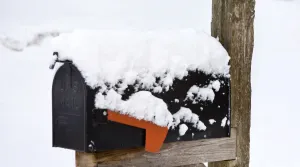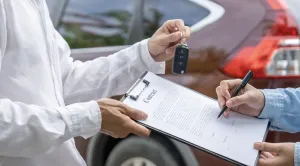When neighbors cross onto your property, start by finding out exactly how and where they’re doing it. Get proof by taking pictures, checking property maps, and having a professional survey done. Talk to your neighbor calmly and openly about the problem, sticking to the facts and looking for ways to fix things together. If talking doesn’t work, try working with a mediator – it’s cheaper than going to court. Knowing your property rights and exactly where your land ends helps you handle these problems better. There are more ways to protect your property that you can look into.
Key Takeaways
- Document the encroachment with photos, surveys, and written records to establish clear evidence of the property boundary violation.
- Approach your neighbor calmly to discuss the issue, focusing on facts and potential solutions rather than accusations.
- Consider professional mediation services if direct negotiations fail, as mediators can facilitate productive discussions toward resolution.
- Obtain updated property surveys and legal documentation to confirm exact boundary lines and support your position.
- Seek legal counsel and court intervention as a last resort when other methods fail to resolve the encroachment dispute.
Understanding Types of Property Encroachment
Property boundary issues happen in different ways that landowners need to know about to handle disputes well.
The most basic type is when buildings or added structures stick out onto someone else’s land.
Plants can also cause problems when trees, bushes, or their roots spread across property lines.
Sometimes utilities like power lines or water drainage cross where they shouldn’t, and people might make paths or driveways that cut through land they don’t own.
Knowing these different types helps neighbors figure out what rules apply and what they can do about it legally.
Each kind of boundary problem needs its own paperwork and solutions, so it’s important to know exactly what type you’re dealing with to solve it properly.
Documenting and Gathering Evidence
You need good proof when dealing with property line problems. Start by getting official copies of property papers, like surveys and deeds, that show where your boundaries are.
Take photos and videos with dates to show what’s happening on your property.
Keep a record of every time you talk to your neighbor about the problem. Write down when you spoke, what was said, and what happened.
Getting a new survey done by experts and talking to people who owned the property before can help back up your side of the story.
Communicating Effectively With Your Neighbor
Collecting proof is important, but you need to be tactful when talking to a neighbor about property issues.
Start the conversation when both of you have time to talk properly. Try to be friendly and not aggressive. When you listen well to your neighbor, it shows you care about their side of the story and helps you understand what’s really bothering them.
It’s best to stick to the facts and stay calm instead of pointing fingers. Show that you want to find answers that work for both of you.
When neighbors can see each other’s point of view, they often fix property problems without needing to go to court.
Legal Rights and Property Boundaries
Property line problems happen when people aren’t sure where their land stops and their neighbor’s land starts.
To fix these problems, landowners need to know their rights and exactly where their property lines are. They should look at their property papers, land surveys, and local records to find the right boundaries.
If neighbors disagree about property lines, they can work together to make a written agreement that shows exactly where each person’s land is and what they can do with it.
Once they file these agreements properly, the law will protect both neighbors’ rights. Getting help from a property lawyer or a land surveyor is a smart way to make sure the boundaries are marked correctly and everything is written down properly.
Professional Mediation and Legal Solutions
If talking directly with neighbors doesn’t fix property line problems, hiring a mediator can help. These skilled problem-solvers bring both sides together to talk things through and find answers that work for everyone, usually at a lower cost than going to court.
When mediation doesn’t work out, taking legal steps might be needed. Property owners can work with lawyers who know all about land disputes.
These lawyers can take the case to court by filing special papers to protect property rights. The court then makes final decisions that set clear property lines and fix any problems with neighbors building or using land they shouldn’t.
Frequently Asked Questions
Can I Remove Items My Neighbor Placed on My Property Without Legal Consequences?
Talk to your neighbor first before taking their stuff off your property. If you just remove things without warning, you could get into legal trouble. A better way is to tell them in writing that their items are on your land and need to be moved. If they ignore you, contact your local police or city officials for help solving the problem.
How Long Does Adverse Possession Take to Become Legally Binding?
The time needed for adverse possession to become legal differs from place to place. It usually takes between 5 and 20 years of living on or using someone else’s land openly and without permission. The land only becomes yours after you meet all the legal rules set by your local laws.
Who Pays for a New Fence When the Existing One Crosses Property Lines?
When a fence sits on the line between two properties, both neighbors usually need to split the cost of replacing it, unless they have other agreements in place or local rules say something different.
Are Verbal Agreements About Property Boundaries Legally Enforceable Between Neighbors?
Verbal deals about property lines between neighbors usually won’t hold up in court. When settling boundary disputes, courts need proper paperwork, property surveys, and official legal documents to make their decisions binding.
Can Security Cameras Be Used as Evidence in Neighbor Encroachment Disputes?
Video from security cameras can be used in court for neighbor disputes as long as it’s properly collected and proven real. Courts will usually accept videos with dates and times that clearly show when someone crosses onto another person’s property without permission.
Conclusion
Property encroachment issues require a systematic approach for successful resolution. Our experienced team at Ace California Law can help you understand the type of encroachment, maintain thorough documentation, and establish clear communication with neighbors to resolve many disputes amicably. When informal methods prove unsuccessful, professional mediation or legal intervention through proper channels may become necessary. The key lies in balancing assertiveness of property rights with maintaining civil neighbor relations while ensuring your interests are legally protected.






